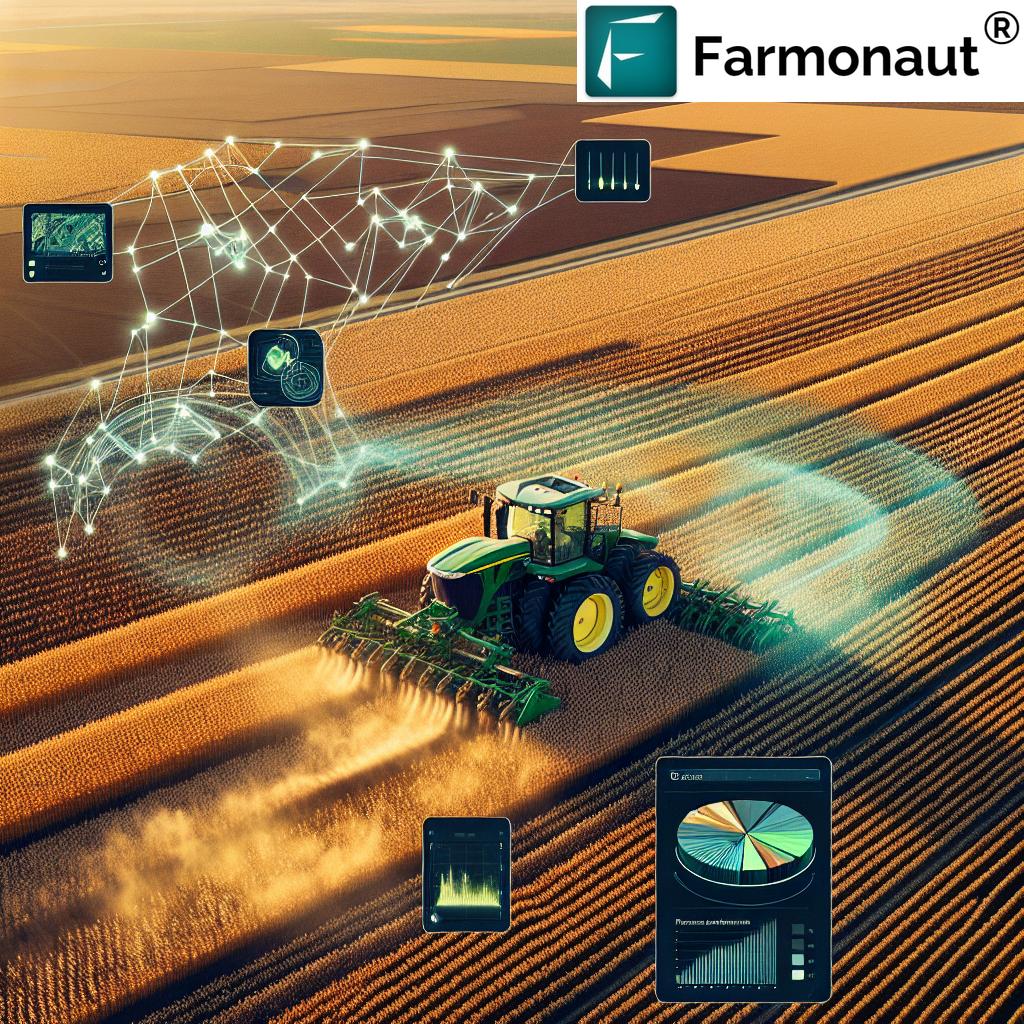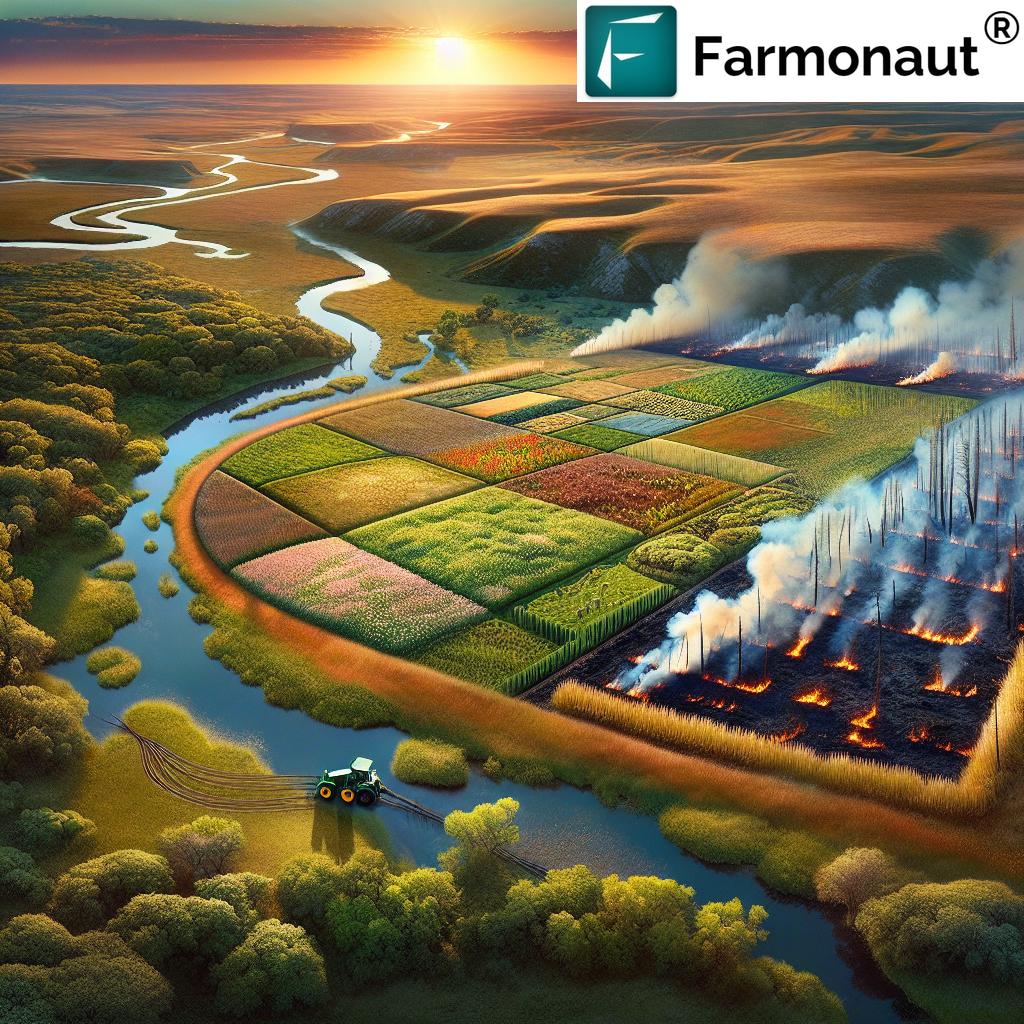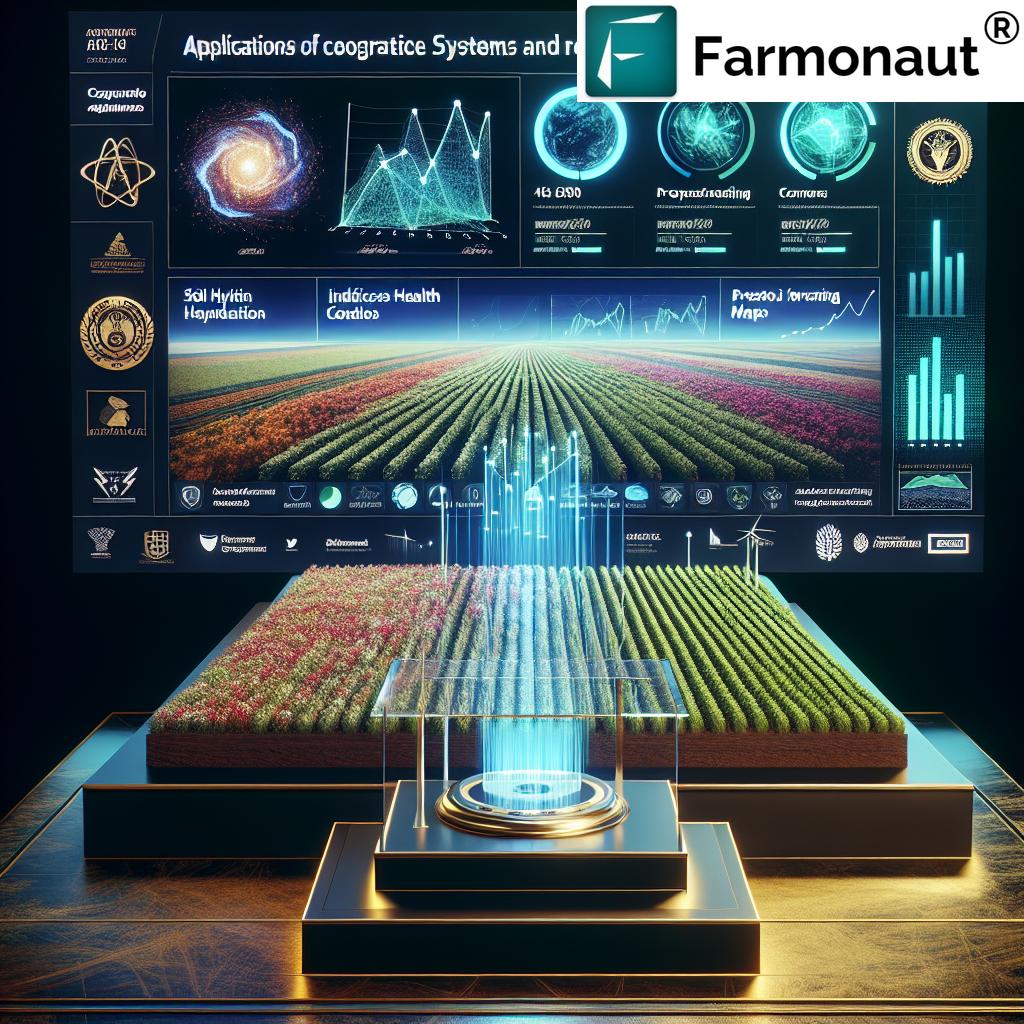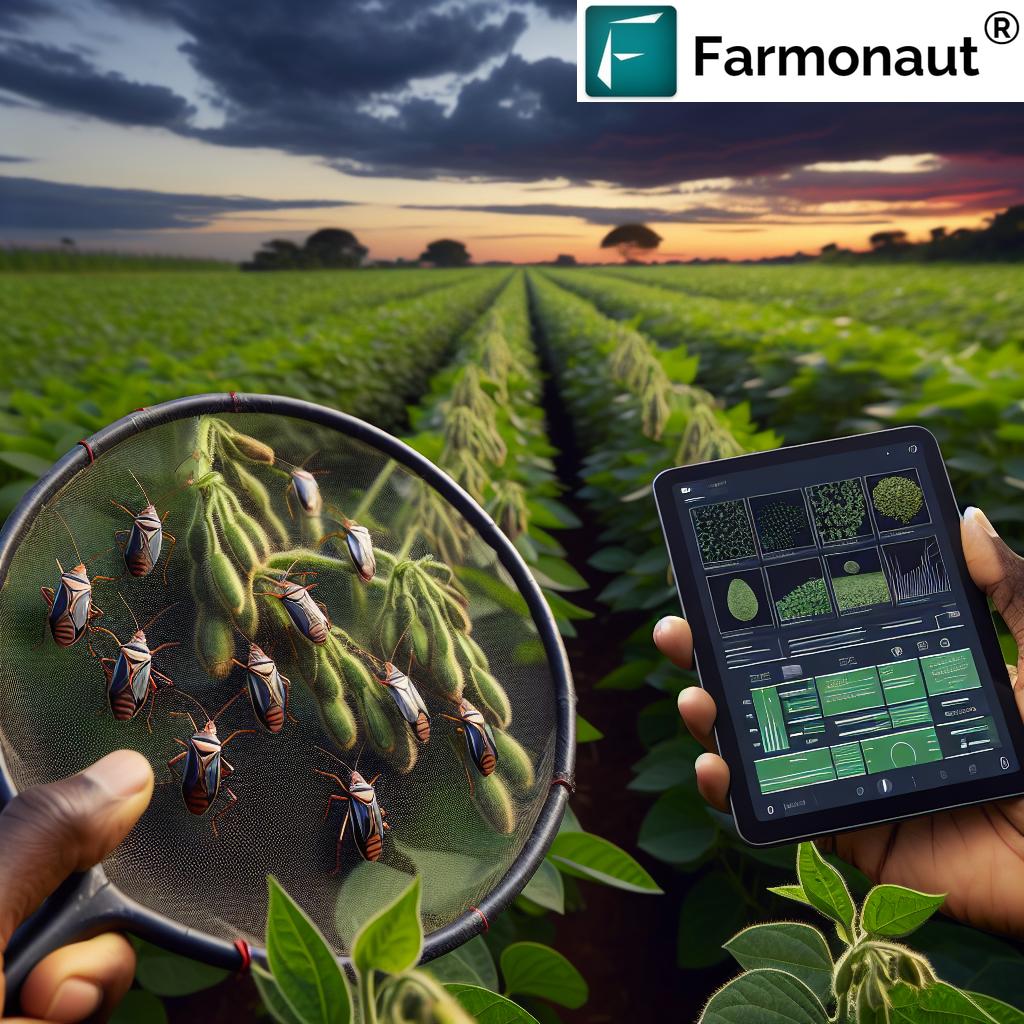Foreign Ownership of US Farmland Soars: Analyzing the 3.4 Million Acre Increase in 2022
“Foreign ownership of US farmland increased by 3.4 million acres in 2022, reaching a total of 43.4 million acres.”
In recent years, we’ve witnessed a significant shift in the landscape of American agriculture. The surge in foreign ownership of US farmland has become a topic of intense discussion and debate among policymakers, economists, and farmers alike. As we delve into this complex issue, we’ll explore the latest trends, their implications, and the role of technology in shaping the future of farming in America.
Understanding the Surge in Foreign Ownership
The year 2022 marked a substantial increase in foreign-held farmland in the United States. With a staggering 3.4 million acre rise, the total acreage under foreign ownership reached 43.4 million by December 2022. This trend has raised eyebrows and sparked conversations about the future of American agriculture and its implications for national security, food production, and rural economies.

Key Factors Driving Foreign Investment in US Farmland
- Stable political environment
- Advanced agricultural infrastructure
- Potential for high returns on investment
- Diversification of international portfolios
- Access to cutting-edge agricultural technology
These factors have made US farmland an attractive option for foreign investors looking to expand their agricultural holdings. The influx of international capital has both positive and negative implications for the American farming industry.
The Impact on Agricultural Land Investment Trends
The surge in foreign ownership has significantly influenced agricultural land investment trends across the country. We’re seeing a shift in the dynamics of farmland real estate markets, with increased competition driving up land prices in many regions. This trend has far-reaching effects on both established farmers and new entrants to the industry.
Key impacts include:
- Rising farmland values
- Increased difficulty for young farmers to enter the market
- Potential for large-scale land consolidation
- Changes in local farming practices and crop choices
As these trends continue to evolve, it’s crucial for stakeholders in the agricultural sector to stay informed and adapt to the changing landscape.
The Role of Precision Agriculture Technology
In the face of changing ownership patterns and increasing competition, precision agriculture technology has emerged as a critical tool for optimizing farm operations. Advanced farm management software, like Farmonaut, plays a pivotal role in helping farmers maximize crop yields and implement sustainable farming practices.
Farmonaut’s satellite-based solutions offer:
- Real-time crop health monitoring
- AI-driven advisory systems
- Resource management tools
- Blockchain-based traceability
These technologies are essential for both domestic and foreign-owned farms to maintain competitiveness and sustainability in an evolving agricultural landscape.
Agricultural Policy and Legislation: Responding to Foreign Ownership
The increasing foreign ownership of US farmland has prompted responses from policymakers at both state and federal levels. Several states have enacted laws to restrict or regulate foreign ownership of agricultural land, aiming to protect national interests and maintain domestic control over food production.
Key legislative actions include:
- Restrictions on the percentage of land that can be foreign-owned
- Increased reporting requirements for foreign land transactions
- Reviews of foreign investments for national security implications
- Incentives for domestic farmland ownership
These policy responses reflect the complex balance between encouraging foreign investment and protecting national interests in the agricultural sector.
Impact on Rural Economic Development
The influx of foreign capital into US farmland has significant implications for rural economic development. While it brings potential benefits such as increased investment and modernization, it also raises concerns about the long-term sustainability of rural communities.
Potential benefits include:
- Job creation in agricultural and related industries
- Increased tax revenue for local governments
- Modernization of farming infrastructure
- Access to global markets and expertise
Potential challenges include:
- Displacement of local farmers
- Changes in traditional farming practices
- Potential for profits to be exported rather than reinvested locally
- Cultural shifts in rural communities
Balancing these factors is crucial for ensuring that foreign investment contributes positively to rural economic development.
The Role of Agtech Innovations in Addressing Challenges
As the landscape of farmland ownership evolves, agtech innovations are playing an increasingly important role in addressing the challenges faced by both domestic and foreign-owned farms. Advanced technologies are helping to level the playing field and improve overall agricultural productivity.
Key agtech innovations include:
- Satellite-based crop monitoring
- Precision irrigation systems
- AI-powered pest and disease detection
- Automated farm equipment
- Blockchain for supply chain transparency
These technologies are essential for maintaining competitiveness in an increasingly global agricultural market. Farmonaut’s advanced solutions, including its AI advisory system and blockchain-based traceability, are at the forefront of this technological revolution in farming.
Explore Farmonaut’s API for advanced agtech solutions
Impact on Food Production and National Security
The increase in foreign ownership of US farmland has raised concerns about its potential impact on food production and national security. As more agricultural land comes under foreign control, questions arise about the long-term implications for America’s food supply and agricultural independence.
Key considerations include:
- Potential influence on crop choices and production methods
- Control over strategic food resources
- Impact on domestic food prices and availability
- Implications for agricultural export policies
Addressing these concerns requires a delicate balance between encouraging foreign investment and safeguarding national interests in the agricultural sector.

The Future of Farming in America: Trends and Projections
As we look to the future of farming in America, several trends and projections emerge that will shape the industry in the coming years. These trends are influenced by the changing patterns of land ownership, technological advancements, and evolving consumer preferences.
Key trends include:
- Continued growth in precision agriculture adoption
- Increased focus on sustainable and regenerative farming practices
- Rise of vertical farming and urban agriculture
- Greater emphasis on data-driven decision-making in farm management
- Expansion of agtech startups and innovations
These trends highlight the importance of staying ahead of the curve in terms of technology adoption and sustainable practices. Farmonaut’s suite of tools, including its farm management software and AI advisory system, are designed to help farmers navigate these evolving trends and optimize their operations for the future.
Access Farmonaut’s API Developer Docs for cutting-edge agtech solutions
The Role of Sustainable Farming Practices
As foreign ownership of US farmland increases, there’s a growing emphasis on implementing sustainable farming practices. This focus is driven by both environmental concerns and the need for long-term agricultural viability.
Key sustainable farming practices include:
- Conservation tillage
- Crop rotation and diversification
- Precision nutrient management
- Integrated pest management
- Water conservation techniques
Farmonaut’s farm management software plays a crucial role in supporting these sustainable practices by providing real-time data and insights that enable farmers to make informed decisions about resource allocation and crop management.
The Impact on Agricultural Exports
The increase in foreign ownership of US farmland has implications for agricultural exports, a critical component of the US economy. As international investors gain more control over American agricultural production, there may be shifts in export patterns and priorities.
Key considerations for agricultural exports include:
- Potential changes in crop types and quantities produced for export
- Impact on trade relationships and agreements
- Influence on global market competitiveness
- Effects on domestic food prices and availability
Monitoring these trends is crucial for understanding the long-term implications of foreign land ownership on US agricultural exports and the broader economy.
Technological Advancements and Crop Yield Optimization
In the face of changing ownership patterns and increasing global competition, technological advancements play a crucial role in optimizing crop yields. Precision agriculture tools and data-driven farming practices are becoming increasingly important for maintaining productivity and profitability.
Key technologies for crop yield optimization include:
- Satellite-based crop monitoring
- AI-powered predictive analytics
- IoT sensors for real-time field data collection
- Variable rate technology for precise input application
- Automated irrigation systems
Farmonaut’s advanced farm management software integrates many of these technologies, providing farmers with the tools they need to maximize yields while minimizing resource use.
The Role of Government Policies in Shaping Agricultural Landscapes
Government policies play a significant role in shaping the agricultural landscape, including the regulation of foreign ownership of farmland. These policies aim to balance the benefits of foreign investment with the need to protect national interests and support domestic farmers.
Key policy areas include:
- Land ownership regulations
- Agricultural subsidies and support programs
- Trade policies and export regulations
- Environmental and conservation regulations
- Research and development funding for agricultural innovations
As the agricultural sector continues to evolve, it’s crucial for policymakers to adapt and create policies that support sustainable growth and innovation in the industry.
The Future of Precision Agriculture and Farm Management Software
As foreign ownership of US farmland increases, the role of precision agriculture and farm management software becomes even more critical. These technologies are essential for maintaining competitiveness, optimizing resource use, and implementing sustainable farming practices.
Key trends in precision agriculture include:
- Integration of AI and machine learning for predictive analytics
- Improved satellite and drone imagery for crop monitoring
- Advanced sensors for real-time soil and crop health data
- Blockchain technology for supply chain transparency
- Automated farm equipment and robotics
Farmonaut is at the forefront of these technological advancements, offering cutting-edge solutions that help farmers navigate the complexities of modern agriculture in an increasingly globalized market.
Foreign Ownership of US Farmland by Country (2022)
| Country | Acreage Owned | Percentage of Total Foreign-Owned Land |
|---|---|---|
| Canada | 12,791,000 | 29.47% |
| Netherlands | 4,957,000 | 11.42% |
| Italy | 2,821,000 | 6.50% |
| United Kingdom | 2,685,000 | 6.19% |
| Germany | 2,149,000 | 4.95% |
| Other Countries | 17,997,000 | 41.47% |
| Total | 43,400,000 | 100% |
“Foreign-held farmland in the US accounts for approximately 3.4% of all privately held agricultural land in the country.”
The Impact of Climate Change on Agricultural Land Investment
Climate change is becoming an increasingly important factor in agricultural land investment decisions, including those made by foreign investors. As weather patterns become more unpredictable and extreme events more frequent, the value and productivity of farmland can be significantly impacted.
Key considerations include:
- Changing growing seasons and crop suitability
- Increased risk of drought, floods, and other extreme weather events
- Need for climate-resilient farming practices
- Investment in water management and irrigation infrastructure
- Potential for new agricultural opportunities in previously unsuitable areas
In this context, technologies like Farmonaut’s satellite-based crop monitoring and AI advisory systems become even more valuable, helping farmers adapt to changing conditions and mitigate climate-related risks.
The Role of Blockchain in Agricultural Supply Chains
As foreign ownership of US farmland increases, ensuring transparency and traceability in agricultural supply chains becomes increasingly important. Blockchain technology offers a solution to this challenge, providing a secure and transparent way to track agricultural products from farm to consumer.
Benefits of blockchain in agriculture include:
- Enhanced food safety and quality control
- Improved supply chain efficiency
- Reduced fraud and counterfeiting
- Increased consumer trust and brand loyalty
- Better compliance with regulatory requirements
Farmonaut’s blockchain-based traceability solutions are at the forefront of this technological revolution, helping to ensure transparency and trust in increasingly complex global agricultural supply chains.
The Future of Rural Communities in the Face of Changing Land Ownership
The increase in foreign ownership of US farmland has significant implications for rural communities. As ownership patterns shift, these communities must adapt to changing economic and social dynamics.
Key challenges and opportunities include:
- Potential for new job creation and economic diversification
- Changes in local demographics and cultural dynamics
- Need for infrastructure improvements to support modern farming practices
- Opportunities for agritourism and value-added agricultural products
- Importance of maintaining local control and community involvement in land use decisions
Navigating these changes requires a collaborative approach involving local communities, policymakers, and agricultural stakeholders to ensure the long-term vitality of rural America.
FAQs About Foreign Ownership of US Farmland
- Q: Why is foreign ownership of US farmland increasing?
A: Foreign investors are attracted to US farmland due to its stability, advanced infrastructure, and potential for high returns. The US also offers a favorable political and economic environment for agricultural investments. - Q: What percentage of US farmland is foreign-owned?
A: As of 2022, approximately 3.4% of all privately held agricultural land in the US is foreign-owned, totaling 43.4 million acres. - Q: Which countries own the most US farmland?
A: Canada is the largest foreign owner of US farmland, followed by the Netherlands, Italy, the United Kingdom, and Germany. - Q: Are there laws regulating foreign ownership of US farmland?
A: Yes, several states have enacted laws to restrict or regulate foreign ownership of agricultural land. There are also federal reporting requirements for foreign land transactions. - Q: How does foreign ownership impact US farmers?
A: Foreign ownership can lead to increased competition for land, potentially driving up prices. It may also introduce new farming practices and technologies, which can have both positive and negative impacts on local farmers.
Conclusion: Navigating the Changing Landscape of US Farmland Ownership
As we’ve explored throughout this article, the surge in foreign ownership of US farmland is a complex issue with far-reaching implications for American agriculture, rural communities, and national food security. While it presents challenges, it also offers opportunities for innovation, investment, and modernization in the agricultural sector.
The key to navigating this changing landscape lies in balancing the benefits of foreign investment with the need to protect national interests and support domestic farmers. This requires thoughtful policy-making, continued investment in agricultural technology and sustainable practices, and a commitment to transparency and traceability in the food supply chain.
As we look to the future, the role of advanced farm management solutions like Farmonaut becomes increasingly crucial. By leveraging cutting-edge technologies such as satellite-based crop monitoring, AI-driven advisory systems, and blockchain-based traceability, farmers and agricultural stakeholders can adapt to changing ownership patterns while optimizing productivity and sustainability.
The future of US agriculture in the face of increasing foreign ownership will depend on our ability to embrace innovation, implement sustainable practices, and create policies that support a diverse and resilient agricultural sector. By doing so, we can ensure that American farmland remains productive, profitable, and a cornerstone of national prosperity for generations to come.
















